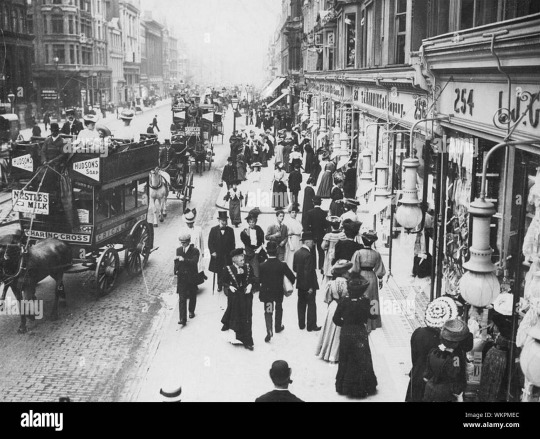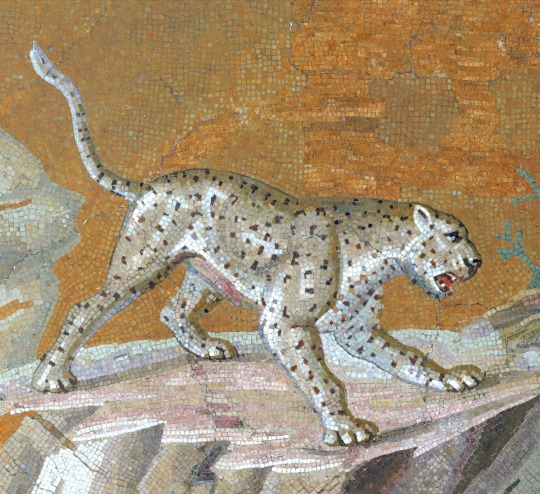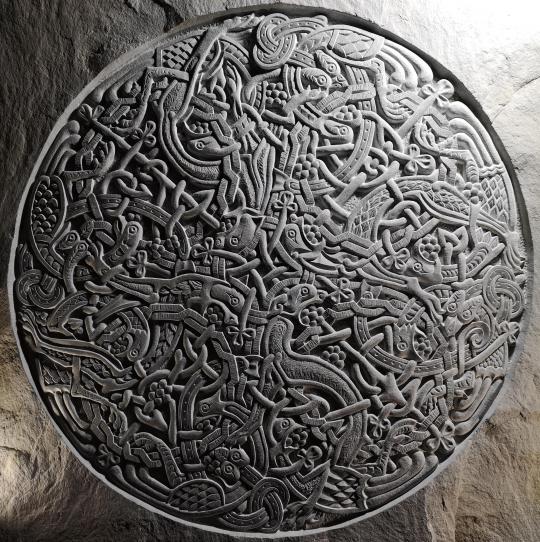Being a haphazard record of my attempts to recreate the Japanese "middle ages," mainly focusing on Heian period clothing and crafts...and attempting to survive camping in a drastically different climate from Japan.
Don't wanna be here? Send us removal request.
Text
It's truly fucked up how ancient Ancient Egypt really is. Like, the New Kingdom period of Egyptian history ended in the 11th century BC, and that's the one they call the New Kingdom. King Tut's reign was one thousand years before the time of Cleopatra. The Great Pyramid of Giza was older to the Romans than the Romans are to us. Ancient Egypt is just fucked up old and it blows my mind every time I think about it.
7K notes
·
View notes
Text
You know you've fucked up when you go to a doctor and the thing you have wrong with you has been named after an occupation that isn't a thing anymore. Like imagine a doctor looking at you and going "yeah you've got ox-drawn ploughman's disease. We don't even test for that anymore. Yeah the reason you've never heard of it is because the last known case was in 1927 and happened to some guy who was like 98 years old and didn't believe in modern medicine of the time. What the fuck have you been up to."
111K notes
·
View notes
Text
13K notes
·
View notes
Note
JOUSTER??? Are there pictures??
Sure is. I did it fairly regularly between 2010 and 2017 and was fortunate to travel quite a bit with it too. These pictures below are from a 2012 tournament in Texas. I trained up here in Canada with a local group and we trailored the horses down for this one. I'm riding Peter here, who I learned to joust on. Peter has since moved on to the big meadow in the sky but he was the best mount you could ask for starting out.


It's been a hot minute since I've talked about jousting so the rest of this is gonna be under a cut haha.
Anyway, later that year, I got bucked off jousting at a gay wedding and got pretty badly concussed so didn't do much in 2013 but in 2014, an invitation arrived for a tournament in Australia and I couldn't say no. These photos are from Australia the first time.


I'm jousting an Australian friend there on her lovely boy Apollo. The second image gives a good sense of the action and impact, especially my lance which has rotated around entirely and seems to be hanging in the air between us. That was our first pass of the tournament and we just about wiped each other entirely out LOL.
For local shows, I usually rode the troupe's horses, which included Rowan (left) and Blue (right), below:


And Galahad (he was the dude who bucked me off later that season), below:

In late 2014, I worked my own horse (Ziggy) up and did some of my best riding with him that year. Here we are breaking sticks with Sarah from Australia at our local show:

Graduated from my loaner armour in 2015 and upgraded to a historically-accurate custom-made 1480s South German armour, which made the whole experience 30000x better. Shout-out to @xxstarfukkerzxx, fellow local jouster, for the shot below:

Here I am with Arthur (left) at the Folsom Renaissance Faire in 2016 (I think?).

Also got to France that year (sure don't miss the historically-accurate long medieval dude hair but do miss scrappy little Kerleos, who was a fantastic, tough-as-nails ride):

And back to Australia (riding Duke, the retired racehorse):


My last tournament was a real fancy English one in 2017. Spoiler: I was cripplingly -awful- at this one (buy me a beer sometime and I'll tell you why) but the horses, locale, and photos were second to none.



Will never look as cool in a photo as this last one but feel my photos with Barney C.'s MetroCop kit and helmet on are kinda close.
Anyway, having aged / matured in the years since 2017, I would certainly like to get back into it when the conditions are right! Also more than happy to answer questions about the whole process because there is a LOT to it.
310 notes
·
View notes
Photo

An uchikatsugi is a long veiled headdress once worn by noble women to protect their anonymity. It was normal street wear for the nobility, and probably also protected them from mosquitoes.
Here, Mao (Geiko of Gion Kobu) peeks out from beneath her uchikatsugi as she portrays Madame Fujiwara Tamie (1280) in Kyoto’s famous Festival of Ages. Also known as Abutsu Ni, she wrote the Izayo Nikki (Diary) in 1277.(source)
2K notes
·
View notes
Text
Wake up babe a new open access review about Ice Age fashion just dropped.
Paleolithic eyed needles and the evolution of dress (Science Advances 28 June 2024)
This article uses the spread of bone awls and needles to trace the evolution of clothing from simple, minimally protective coverings to finely tailored, insulating garments across the geography of the Last Glacial Maximum. Not surprisingly, needle use is associated with cold climates and the need for warm, fitted clothing. But the wide variation in needle size, including very small ones for fine, delicate work, along with frequent discovery of shell and bone beads showing use wear consistent with rubbing against clothing, shows the evolution of clothing into dress. Bodily adornment transitioned to clothing to mark identity and status.

Fig. 4. Puncture marks consistent with leather hole punching on a bone fragment at Canyars, Catalonia, dated to 39,600 cal B.P. Scale bars, 1 cm. Photos: L. Doyon, F. d’Errico.

Fig. 5. Morphological variation in the size and shape of Late Pleistocene eyed needles. Scale bar, 1 cm. Modified from d’Errico et al.

Fig. 2. Nassarius kraussianu shell beads from Blombos Cave Still Bay layers, southern Africa, dated to approximately 73,000 to 70,000 years ago. Arrows indicate use-wear facets. Photos: F. d’Errico [modified after d’Errico et al.]
4K notes
·
View notes
Photo


The Battle of the five Armies countdown - day 21 of 30
178K notes
·
View notes
Text
love this egyptian figurine of a woman baking bread in the brooklyn museum. she looks exactly like me while i'm waiting for my food to be done in the microwave. truly an eternal experience

40K notes
·
View notes
Text
For some reason, it never occurred to me that Project Gutenberg would have public domain old cookbooks. This is BRILLIANT. There’s a 1953 cranberry recipe pamphlet and a suffrage cookbook from 1915 and a translation of Apicus’s guide to food in Imperial Rome and a whole bunch of other fascinating old cookbooks, many pre-1800. Treasure trove!
89K notes
·
View notes
Note
Hello!
I am an aspiring author who struggles with accurately portraying historical clothing, and I stumbled across your blog while searching for photographs and information on late 19th century/USA Gilded Age fashion. From the research I've seen compiled across books/the internet, the clothing of the upper class from that area is very well documented in paintings, garment catalogues, photographs, museums, etc....but finding information on what the day-to-day wear of normal people was like is proving much more difficult. Since you seem to be knowledgeable in the subject of historical clothing in this approximate time period, I was wondering if you knew about any good resources to learn more about what people who couldn't afford to follow upper class trends were wearing in the general era as well as any general information around these items.
If it helps, I'm focused on eastern and southeastern United States farming/small railroad town/mountain mining/gulf coast wetland communities, but even just more general resources about what sort of clothing that the average poor person during the Gilded Age wore would be greatly helpful. I've been able to find a few photographs here and there, but these probably aren't an accurate depiction of a persons' 'day-to-day' wear, and I also haven't found much on how women learned to sew homemade clothes, what garments if any would have been bought, where people in rural areas would have sourced their cloth, what undergarments were like, how work shoes were made & aquired, ect.
Please feel free to ignore this if it isn't something you're interested in answering as I'm sure you get a lot of asks, but I'd greatly appreciate it if you have any pointers!
So here's the thing about 19th-century clothing:
in many ways, it's the same all the way down
now, that's a serious generalization. is a farm wife in Colorado going to be wearing the same thing as a Vanderbilt re: materials, fit, and up-to-the-minute trendiness? obviously not. but because so much of what people wore back then has only survived to the present day in our formalwear- long skirts, suits, etc. -we tend to have difficulty recognizing ordinary or "casual" clothing from that period. I also sometimes call this Ballgownification, from the tendency to label literally every pretty Victorian dress a Ball Gown (even on museum websites, at times). Even work clothing can consist of things you wouldn't expect to be work clothing- yes, they sometimes worked in skirts that are long by modern standards, or starched shirts and suspenders. Occupational "crap job clothes" existed, but sometimes we can't recognize even that because of modern conventions.
A wealthy lady wore a lot of two-piece dresses. Her maid wore a lot of two-piece dresses. The trailblazing lady doctor working at the hospital down the road from her house wore a lot of two-piece dresses. The factory worker who made the machine lace the maid used to trim her church dress wore a lot of two-piece dresses. The teenage daughter of the farm family that raised the cows that supplied the city where all those people lived wore a lot of- you get the idea. The FORMAT was very similar across most of American and British society; the variations tended to come in fabrics, trims, fit precision, and how frequently styles would be updated.
Having fewer outfits would be common the further down the social ladder you went, but people still tried to have as much underwear as possible- undergarments wicked up sweat and having clean ones every day was considered crucial for cleanliness. You also would see things changing more slowly- not at a snail's pace, but it might end up being a few years behind the sort of thing you'd see at Newport in the summer, so to speak. Underwear was easier to make oneself than precisely cut and fitted outer garments for adults (usually professionally made for all but the poorest of the poor for a long time- dressmakers and tailors catering to working-class clientele did exist), but that also began to be mass-produced sooner than outer clothing. So depending on the specific location, social status, and era, you might see that sort of thing and children's clothing homemade more often than anything else. Around the 1890s it became more common to purchase dresses and suits ready-made from catalogues like Sears-Roebuck, in the States, though it still hadn't outpaced professional tailoring and dressmaking yet. Work shoes came from dedicated cobblers, and even if you lived in isolated areas, VERY few people in the US and UK wove their own fabric. Most got it from the nearest store on trips to town, or took apart older garments they already had to hand and reused the cloth for that.
I guess the biggest thing I want to emphasize is that, to modern eyes, it can be very hard to tell who is rich and who is anywhere from upper-working-class to middling in Gilded Age photographs. Because just like nowadays a custodial worker and Kim Kardashian might both wear jeans and a t-shirt, the outfit format was the same for much of society.
Candid photography can be great for this sort of thing:

Flower-sellers in London's Covent Garden, 1877. Note that the hat on the far right woman is only a few years out-of-date; she may have gotten it new at the time or from a secondhand clothing market, which were quite popular on both sides of the Atlantic.

Also London, turn of the 20th century.

A family in Denver, Colorado, c. early 1890s.

Train passengers, Atlanta, Georgia, probably 1890s.
Hope this helps!
109 notes
·
View notes
Photo



Ancient Roman squid mosaics. 1. Delphi, Greece. 2. Heraclea Lyncestis, Macedonia 3. Aquileia, Italy.
2K notes
·
View notes
Text






Stunning mosaic from the floor of the triclinium (dining room) of Hadrian's Villa, residence of Emperor Hadrian outside Rome
Altes Museum, Berlin
4K notes
·
View notes
Text
"The problem with trying to be historically accurate, is that history doesn't care"
So much of the time we think of historical cultures as being very uniform, but people have always been weird, and our expectations of past behaviour don't always match the reality!
15K notes
·
View notes
Text



Ancient Celtic Bronze Head of a Bull 5th Century BC
550 notes
·
View notes
Text

New to Tumblr, going to start dumping some of the stone carving that I've done here.
This big slate carving is based on a design from the Book of Kells, all hand carved with hammer and chisels.
24K notes
·
View notes





